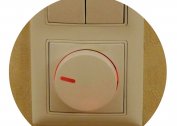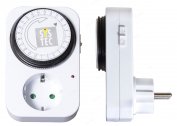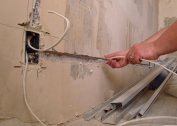During the operation of high-voltage electric circuits, it is often a phenomenon defined by regulatory documents as an interphase circuit. This deviation from the normal operation of power supply systems is associated with malfunctions of the supply lines, the consequences of which are unpredictable. The especially dangerous nature of the possible damage makes it necessary to deal with a number of questions regarding what this phenomenon is, what troubles it leads to and how to avoid them.
The concept and causes of closures
The interphase circuit of electricity in multiphase circuits is the unintended connection of insulated conductors with a damaged protective coating.
In some cases, it manifests itself as a single-phase earth fault or the case of a working electrical equipment.
This condition of the electric network is a violation of the normal mode of operation of the system and is treated as emergency. In this case, at the points of closure of the two conductors or at the points of their contact with the ground, the current increases substantially. Its maximum value sometimes reaches several thousand amperes. Uncontrolled flows of electricity can lead to devastating consequences.
The causes of emergencies in high voltage electrical networks are:
- Damage to the protective insulation of each of the phase conductors due to violations of the rules for the operation of cable lines.
- Accidental breakage of one of the conductors of an air cable and its short circuit to another wire or ground.
- Shorting the wire with damaged insulation to the housing of the existing electrical installation.
Each of the cases of a short circuit is a consequence of a gross violation of the rules for operating electrical equipment and, in accordance with the requirements of regulatory documents, needs to be thoroughly investigated.
Types of faults
 By type of power supply, all short circuits are divided into damage that occurred in single-phase or in three-phase circuits, and by their number - into single and double faults. The simplest case is single-phase lines in which only a single phase closure to neutral or earth is possible. A three-phase short circuit has a large number of options, since the number of wires in the cable increases to 3. The following damage options are possible:
By type of power supply, all short circuits are divided into damage that occurred in single-phase or in three-phase circuits, and by their number - into single and double faults. The simplest case is single-phase lines in which only a single phase closure to neutral or earth is possible. A three-phase short circuit has a large number of options, since the number of wires in the cable increases to 3. The following damage options are possible:
- Short circuit of two high-voltage wires between each other.
- Short circuit of one wire to neutral or ground (single-phase short circuits).
- Contact of two conductors with the ground surface at once.
In each of these cases, including two-phase short-circuit to ground, the considered malfunction is manifested in a special way, characterized by spreading currents and distribution of emergency potentials. In addition to these factors, the current process is described by an indicator such as touch voltage. The specified parameter represents the voltage applied to the human body between two points of contact with the bare wire.
The same type of hazardous effects includes the potential difference that appears between the parts of the body in contact with the bare wire, closed to the ground. With single-phase short circuits, of particular interest is the question of what magnitude the touch voltage reaches when the phase is closed. According to the provisions of the PUE, this indicator depends on the distance between the contact zones and increases with its increase.
In some cases, when the resistance to current spreading to the ground is too high, the contact voltage reaches a dangerous value for a person.
Consequences of KZ
 The dangerous manifestations of interphase closure of a three-phase circuit (as well as a single-phase) include the consequences associated with the flow of extremely large values in the current line. They naturally become the cause of the following emergencies:
The dangerous manifestations of interphase closure of a three-phase circuit (as well as a single-phase) include the consequences associated with the flow of extremely large values in the current line. They naturally become the cause of the following emergencies:
- The occurrence of a fire due to the melting and strong heating of the insulation of phase conductors.
- Failure of power equipment connected to a damaged line.
- An electric shock to a person accidentally caught in an emergency circuit.
When moving in this zone, it is important to take into account the so-called "step voltage", which is formed due to the spreading of the leakage current into the soil between the legs of a person. This indicator is counted between its feet when moving around a cable that has fallen to the ground. It can also reach dangerous values, especially during accidents in high-voltage overhead lines of 6.3-10 kW. Therefore, PUEs are instructed to move in these zones with a characteristic goose-foot step: the foot is closely attached to the foot.
The main condition for reliable protection against single-phase and two-phase faults in 220/380 Volt power lines is high-quality insulation that can withstand test voltages up to 1000 Volts. The value of its resistance, according to the PUE, should be at least 0.5 megohms for each of the phases. To prevent fires and equipment breakdowns, special protective devices are installed in the power circuits, which provide instant line shutdown when a short circuit occurs. These devices include:
- Linear automatic fuses.
- Current breakers and high voltage relays.
- Automatic circuit breakers and others.
With their help, it is possible to prevent the destructive consequences of phase closures, which sometimes occur for reasons independent of the person.
Thanks to the timely adoption of appropriate measures, it is possible to maintain the integrity of material resources, as well as to protect personnel from equipment from electric shock.
Interphase circuit of a high voltage line: protection methods
 In the supply circuits with an operating voltage of more than 1000 volts, it is not allowed to use automatic disconnectors, since when they open their power contacts, an arc of high power is formed. In this case, oil, vacuum or gas switches are used to switch the lines.
In the supply circuits with an operating voltage of more than 1000 volts, it is not allowed to use automatic disconnectors, since when they open their power contacts, an arc of high power is formed. In this case, oil, vacuum or gas switches are used to switch the lines.
Relay circuits are also used to protect high-voltage networks. They differ in simple execution and are converting devices operating according to the law of Faraday induction - guidance of the electric field. The relay equipment, which provides protection of high-voltage lines against overvoltage, is based on a current transformer. With its help, it is possible to control the amount of current in the emergency line and, when it reaches the limit value, to generate a signal that enters the winding of a powerful electromagnet. This protective device, after its operation, disconnects the entire supply circuit from the power supply source.
Regardless of the availability of switching equipment, the main way to protect against interphase and three-phase faults is to use cable products with high-quality insulation. Under this condition, any high-voltage line is able to withstand short-circuit currents that are many times higher than the permissible norm.
Preventative measures
The most effective and reliable way to prevent short circuits is a professional approach to solving the following technical and organizational issues:
- Choosing a suitable power cable that can withstand large overcurrents.
- Strict observance of the rules of installation and operation of electrical networks, as well as machines and devices connected to them.
- The presence of acceptance certificates of the power supply system when putting it into operation.
- The use of modern types of protective equipment that guarantees instant shutdown of the line in the event of an emergency.
Particular attention is paid to preventive measures carried out in strict accordance with the requirements of current standards. According to the provisions relating to the maintenance of electric networks, prevention is carried out according to a pre-drawn up plan approved by the head of a specific unit. During its implementation, it is necessary to distinguish the following types of preventive maintenance:
- Visual inspections.
- Routine and preventive maintenance.
- Testing of electrical equipment during its acceptance and during operation.
The shorting of electric wires to the ground is a very dangerous phenomenon, which can lead to fire and subsequent fire. In addition, it is fraught with the possibility of defeating people serving the installation with high voltage. All this ultimately forces one to take special protection measures that ensure the normal operation of networks in the absence of critical modes.




